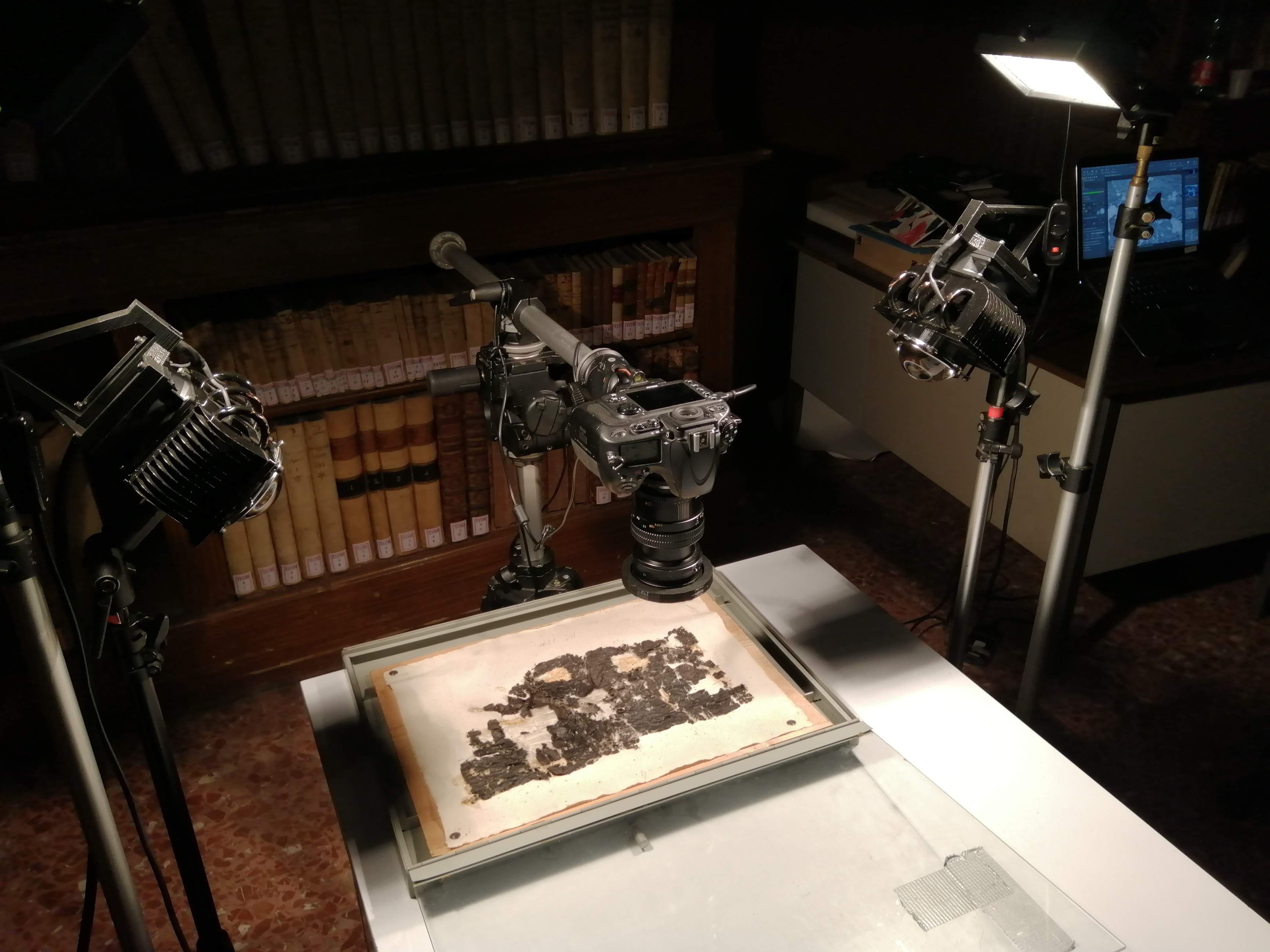Over 1,000 words, corresponding to 30% of the text, is what emerged from the Herculaneum papyrus, burned by the eruption of Vesuvius in 79 AD. C., containing the History of the Academy of Philodemus of Gadara (110-after 40 BC), thanks to the technological ‘gaze’ of innovative study methodologies used within the ‘GreekSchools’ project, of which in Naples, at the National Library ‘Vittorio Emanuele III’, the state of progress of the research was presented.
The work of Philodemus of Gadara is fundamental for the history of Greek philosophy, especially Plato and the academic school. Among the most important news, we read that Plato was buried in the garden reserved for him (a private area intended for the Platonic school) of the Academy in Athens, near the so-called Museion or sacellum sacred to the Muses. Until now it was only known that he was buried generically in the Academy.
Still on the subject of the great Greek philosopher, it emerges that he was sold as a slave on the island of Aegina perhaps already in 404 BC, when the Spartans conquered the island or, alternatively in 399 BC, immediately after the death of Socrates. Until now it had been believed that Plato had been sold into slavery in 387 BC during his stay in Sicily at the court of Dionysius I of Syracuse. In another passage, in a dialogue between characters, Plato expresses himself contemptuously about the musical and rhythmic abilities of a barbarian musician originally from Thrace.
The ‘GreekSchools’ project which received ERC (European Research Council) funding amounting to 2,498,356 euros, started in 2021 and will last 5 years and eight months, is coordinated by Graziano Ranocchia of the University of Pisa in collaboration with the Institute of Cultural Heritage Sciences (ISPC) and the ‘Antonio Zampolli’ Institute of Computational Linguistics (ILC) of the National Research Council, and the National Library of Naples where this papyrus, burned following the eruption of Vesuvius in 79 AD. C, is preserved together with many others.
The project, in addition to the investigation into the state of conservation of these artefacts, has the objective of publishing an updated edition – thanks to the application of imaging techniques and philological methods – of the Review of Philodemus’ philosophers, the most ancient history of Greek philosophy in our possession. The History of the Academy is part of it, which contains much exclusive information about Plato and the development of the Academy under his successors.
“Compared to previous editions, there is now an almost radically changed text, implying a series of new and concrete facts about various academic philosophers. Through the new edition and its contextualization, scholars have arrived at unexpected deductions of interdisciplinary scope for ancient philosophy, Greek biography and literature and the history of the book”, comments Graziano Ranocchia.
“Some previous additions have been replaced, some previously fragmentary passages have been integrated or reread. The increase in the text corresponds roughly to the discovery of ten new medium-sized papyrus fragments. The new readings often draw on new and concrete facts about ‘Plato’s Academy, on Hellenistic literature, on Philodemus of Gadara and ancient history in general”, adds Kilian Fleischer, the editor of this precious papyrus within the GreekSchools project.
“The ‘GreekSchools’ project also has the aim of developing methods of investigation of manuscripts by applying the most advanced diagnostic imaging techniques available today (infrared and ultraviolet optical imaging, molecular and elemental imaging, thermal imaging, tomography, digital optical microscopy, etc.)”, specifies Costanza Miliani of the Cnr-Ispc.
The staff of this Institute, of the Cnr-Scitec and of other European research centres, using mobile instruments from the Molab platform belonging to the European research infrastructure on Heritage Science E-Rihs, apply non-invasive techniques to opisthograph and stratified papyrus in order to read text inaccessible on the reverse or hidden within multiple layers.
